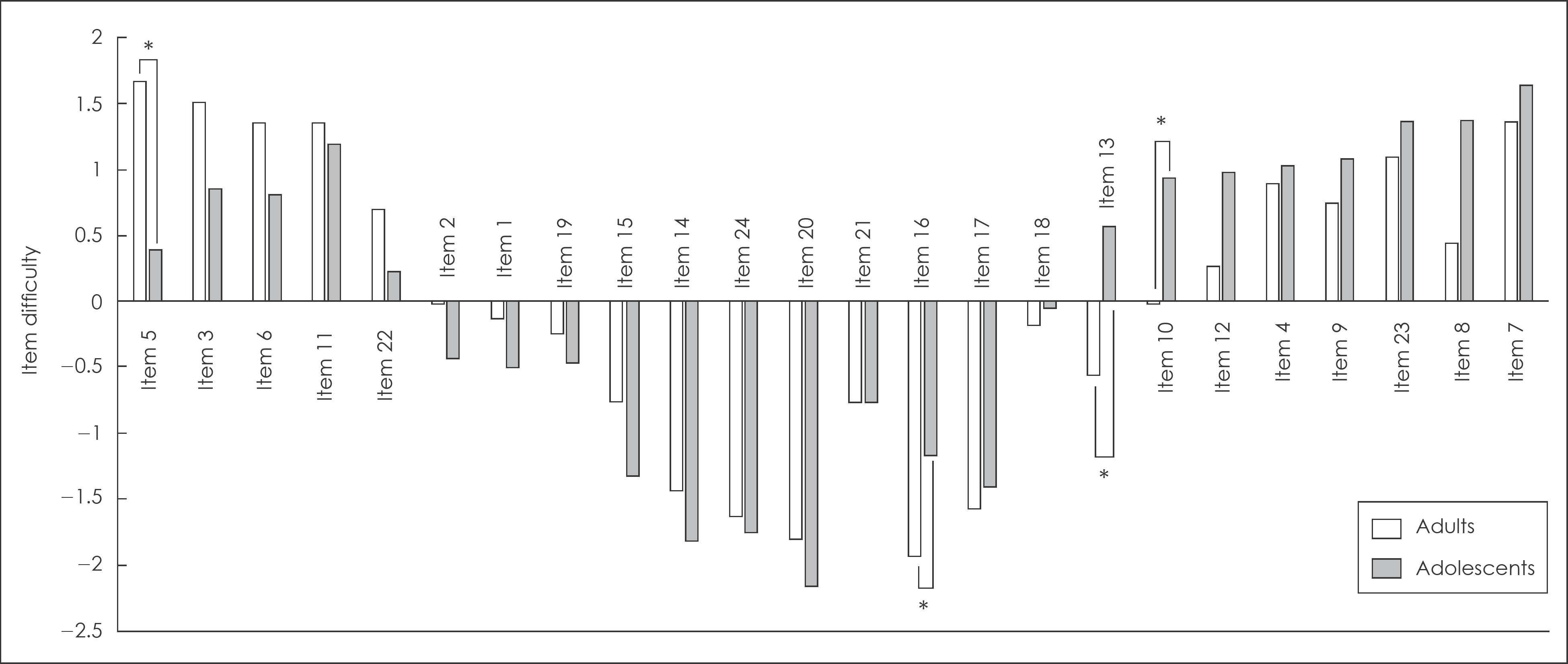1). Johns LC, van Os J. The continuity of psychotic experiences in the general population. Clin Psychol Rev. 2001; 21:1125–1141.

2). Chapman LJ, Chapman JP, Miller EN. Reliabilities and intercorrelations of eight measures of proneness to psychosis. J Consult Clin Psychol. 1982; 50:187–195.

3). Eckblad M, Chapman LJ. Magical ideation as an indicator of schizotypy. J Consult Clin Psychol. 1983; 51:215–225.

4). Chapman LJ, Chapman JP, Kwapil TR, Eckblad M, Zinser MC. Putatively psychosis-prone subjects 10 years later. J Abnorm Psychol. 1994; 103:171–183.

5). Kwapil TR, Miller MB, Zinser MC, Chapman J, Chapman LJ. Magical ideation and social anhedonia as predictors of psychosis proneness: A partial replication. J Abnorm Psychol. 1997; 106:491–495.

6). Yang IH. A psychometric study of the psychosis proneness scale [dis-sertation]. Seoul: Graduate School of Hanyang Univ.;1996.
7). Jung HY, Chang JS, Yi JS, Hwang S, Shin HK, Kim JH, et al. Measuring psychosis proneness in a nonclinical korean population: Is the peters et al delusions inventory useful for assessing high-risk individuals? Compr Psychiatry. 2008; 49:202–210.
8). Kim Y, Chang JS, Hwang S, Yi JS, Cho IH, Jung HY. Psychometric properties of peters et al. Delusions inventory-21 in adolescence. Psychiatry Res. 2013; 207:189–194.

9). Claridge G, McCreery C, Mason O, Bentall R, Boyle G, Slade P, et al. The factor structure of “schizotypal' traits: A large replication study. Br J Clin Psychol. 1996; 35(Pt 1):103–115.

10). Peters ER, Joseph SA, Garety PA. Measurement of delusional ideation in the normal population: Introducing the pdi (peters et al. Delusions inventory). Schizophr Bull. 1999; 25:553–576.

11). Venables P, Bailes K. The structure of schizotypy, its relation to sub-diagnoses of schizophrenia and to sex and age. Br J Clin Psychol. 1994; 33:277–294.

12). Verdoux H, Van Os J, Maurice-Tison S, Gay B, Salamon R, Bourgeois M. Is early adulthood a critical developmental stage for psychosis proneness? A survey of delusional ideation in normal subjects. Schizophr Res. 1998; 29:247–254.

13). Eckblad M, Chapman LJ. Magical ideation as an indicator of schizotypy. J Consult Clin Psychol. 1983; 51:215.

14). Yang I, Choi M. Mmpi response study on psychology prone group. J Korean Educ Psychol. 1997; 11:255–289.
15). Derogatis LR. Scl-90: Administration, scoring and procedures manual-i for the r evised version and other instruments of the psychopathology rating scale series. Baltimore: John Hopkins University;1977.
16). Kim J, Kim K. The standardization study of symptom checklist-90-revision in korea iii. Ment Health Res. 1984; 2:278–311.
17). Hambleton RK. Fundamentals of item response theory. Sage publications. 1991.
18). Holland PW, Thayer D. Test validity. Lawrence Erlbaum Associates, Inc.;1988.
19). Baker FB. The basics of item response theory. Portsmouth (NH): Heinemann;1985.
20). Scheuneman JD. A theoretical framework for the exploration of causes and effects of bias in testing. Educational Psychologist. 1984; 19:219–225.

21). Vollema MG, van den Bosch RJ. The multidimensionality of schizotypy. Schizophr Bull. 1995; 21:19–31.

22). Casey BJ, Getz S, Galvan A. The adolescent brain. Dev Rev. 2008; 28:62–77.

23). Spear LP. The adolescent brain and age-related behavioral manifestations. Neurosci Biobehav Rev. 2000; 24:417–463.

24). Lewis DA. Development of the prefrontal cortex during adolescence: Insights into vulnerable neural circuits in schizophrenia. Neuropsychopharmacology. 1997; 16:385–398.

25). Walker E, Bollini AM. Pubertal neurodevelopment and the emergence of psychotic symptoms. Schizophr Res. 2002; 54:17–23.

26). Harrop C, Trower P. Why does schizophrenia develop at late adolescence? Clin Psychol Rev. 2001; 21:241–265.

27). Fonseca-Pedrero E, Lemos-Giraldez S, Muniz J, Garcia-Cueto E, Campil-lo-Alvarez A. Schizotypy in adolescence: The role of gender and age. J Nerv Ment Dis. 2008; 196:161–165.





 PDF
PDF ePub
ePub Citation
Citation Print
Print


 XML Download
XML Download